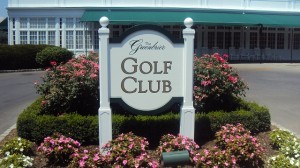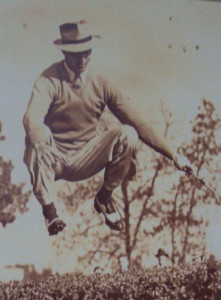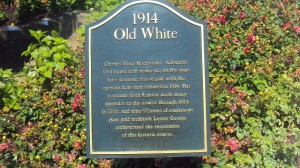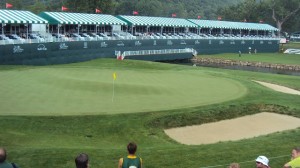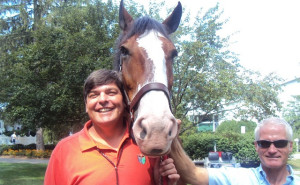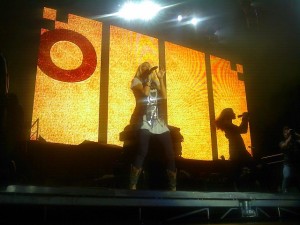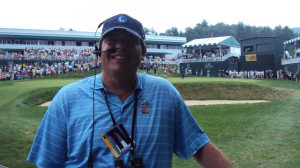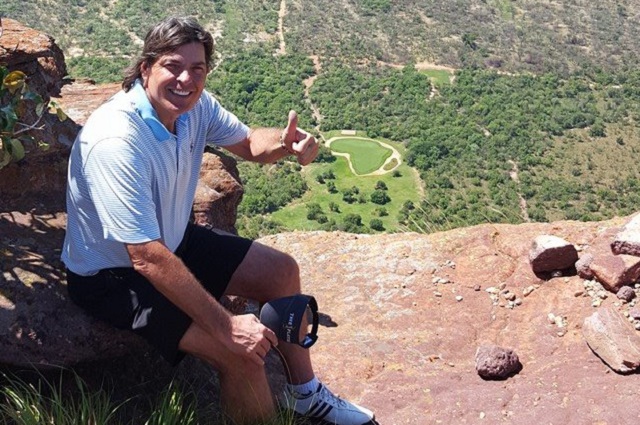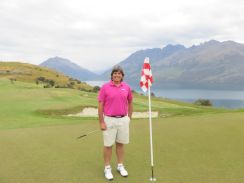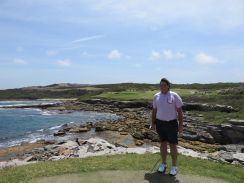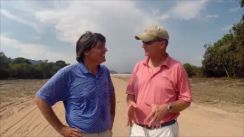Andy Reistetter continues his exclusive “Play-Write” series with one of American golf’s true treasures- The Greenbrier Resort in West Virginia. The author was delighted to have the opportunity to play the Old White Course shortly before the inaugural Greenbrier Classic in 2010. He shares his thoughts on the historical aspects of the Old White course, the lore of Sam Snead and the excitement of competitive golf’s return to The Greenbrier.
In 1979 golfing history changed at The Greenbrier when Spaniard Seve Ballesteros and others from continental Europe first competed against the Americans alongside Great Britain and Ireland in the Ryder Cup.
Team United States still prevailed over Europe by a score of 17 to 11 points.
In 1987 it was Australian Bruce Crampton winning the last Champions Tour event played at the Greenbrier.
In 1994 at The Greenbrier, in only the third Solheim Cup, it was a strong Sunday singles performance led by Beth Daniel and Meg Mallon that regained the Cup for American captain JoAnne Carner.
Sadly it was nearby The Greenbrier in Hot Springs, Virginia where Slammin’ Sammy Snead passed on May 23, 2002 after showcasing his sweet swing one last time earlier that year at The Masters.
Remember Sammy’s little gig on the Swilican Bridge as he bid farewell to St. Andrews?
In between his birth and his death in the same town, during the nearly 90 years on this earth Snead became and still is the most victorious golfer ever. Winning in six decades his triumphs totaled 82 including seven majors.
Talk about almost shooting your age…
Greenbrier’s Professional Emeritus since 1994 won the Open at St. Andrews in 1946, three Masters and three PGA Championships though he never won the U.S. Open, finishing second four times.
The beauty of an American treasure, the lore of Sam Snead and the warmth of West Virginia welcomes the golfing world back next week for the first of six committed Greenbrier Classics.
With a prominent slot in the PGA TOUR’s regular season Fed Ex Cup points competition and Golf Channel and CBS Sports television coverage, born and raised West Virginian Jim Justice’s planned reemergence of the Greenbrier is well underway.

Governor (now United States Senator) presenting Jim Justice with West Virginia’s highest honor, The Distinguished West Virginian Award.
Current playing golf legend Tom Watson is on board as Professional Emeritus since 2005.
West Virginians voted in gambling for the Greenbrier and the Casino Club opened with a red carpet gala over the July 4th weekend.
The initial playing of the Greenbrier Classic will be the cherry on the top of the cake for Justice and the PGA TOUR.
Class and an ancient and royal game will go well together.
While the Ryder Cup and Solheim Cup were played on the Greenbrier course, The Old White Course, the Greenbrier’s first of four golf courses will host the Greenbrier Classic.
The Old White Course opened in 1914 and was designed by America’s first recognized golf course architect Charles Blair Macdonald. His associate Seth Raynor made several alterations and then went on to design the Greenbrier course which opened in 1924.
After 92 years of continuous play noted architect Lester George recently restored the OLD White Course to its original historic vision.
If you are familiar with the “Tour 18” concept of replicating famous holes for amateur play, go back almost 100 years and put yourself in the shoes of Charles Blair Macdonald.
He grew up in Chicago and was sent to St. Andrews University in Scotland at the age of 16. There he took up golf learning from Old Tom Morris himself. After returning to Chicago he rarely played golf for the next 17 years as he worked as a stockbroker.
In 1892 he lays out some golf holes and forms the Chicago Golf Club. He helps form the United States Golf Association and wins the first U.S. Amateur in 1895.
Macdonald’s legacy would become “the father of golf course architecture.” Building upon his youthful exposure to Scottish golf links he went on to design Shinnecock Hills, the National Golf Links and at nearly the age of 60 the Old White Course at the Greenbrier.
Inspired by the original Scottish courses of the game he duplicated many features in a peaceful and beautiful upland valley of the Allegheny Mountains.
The Old White Course is the PGA TOUR golf professional’s version of our “Tour 18.” Nearly 100 years ago, the first golf course architect paid homage to the ancient courses across the pond by duplicating several of their features.
All the golfers in the field at the Greenbrier will be in for a special treat.
They will experience and you will see on television: cross bunkers, Hog’s Back fairways, the deepest green ever with its own “Valley of Sin” in the middle, mounds that look like Hershey Kisses but are called the Alps, horseshoe bunkers, North Berwick’s Redan, punch bowl greens, St. Andrews’ Principal’s Nose and Hell’s Bunker, the Narrows, and a water “cape” hole.
The most unusual feature- a horseshoe ridge in the 18th green may very well be the last challenge for the golfer that cashes in on a big payday come Sunday afternoon.
With a legacy dating back to 1778 this National Historic Landmark will encompass you soon after you come upon its grounds. The drive opens up to a beautiful view of the clinical white Greenbrier main building amidst sculptured landscaping.
After a gaze into the past two centuries the road meanders down a swale. There stands the iconic green dome above the white-columned springhouse that locates the original sulphur springs.
Back then folks came to the Greenbrier for relaxation, medicinal and health purposes.
You can do the same these days too.
The ride is short to the flat valley floor where the sign marks the location of the Greenbrier Golf Club.
Three of the four courses start and end at the clubhouse. The fourth course is a nearby private equity and residential Sporting Club with the Fazio designed Sam Snead course.
The Clubhouse hosts Sam Snead’s fine dining restaurant with an adjacent Slammin’ Sammy sports bar. Panoramic windows overlook the 18th green surrounded with hospitality seating covered with distinctive green-striped awnings.
The Greenbrier is ready for an exciting week of competitive golf and a whole lot of fun.
Country music icon Reba and the award-winning Rascal Flatts will perform as well as country music stars Brad Paisley and Carrie Underwood.
The casino is open for play too.
The Greenbrier resort is putting on her Sunday best for what will surely be a classic tournament next week.
Portraits of Sam Snead himself the inventor of the sidesaddle putting style, another one with “The Great One” Jackie Gleason riding in a golf cart, it seems as if all of golf history on the 20th century is documented on these grounds.
Right there outside the West Portico of the clubhouse is the first tee.
Set upon a bluff with the fairway below leading to the golf course that seemingly stretches to the far side of the valley to the multiple ridges of the Allegheny Mountains.
At the site of Arnold Palmer’s first professional victory and paycheck in the 1955 Sam Snead Spring Festival
Here where Sam Snead recorded the first ever 59 in the 1959 Spring Festival on the Greenbrier course.
At the enshrinement of all of Sam Snead’s 35 hole-in-one golf balls along with the sweet swinging King of Swing’s banjo and trumpet.
At a place where presidents and golf’s legends have come to play golf.
Come visit this American treasure, experience the lore of Sam Snead and the warmth of West Virginia.
